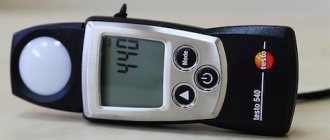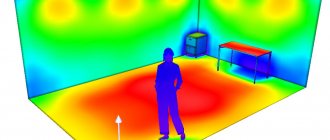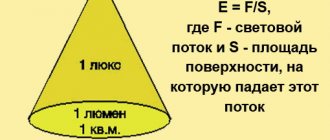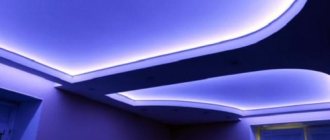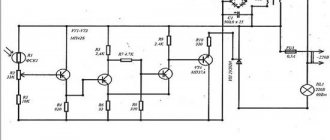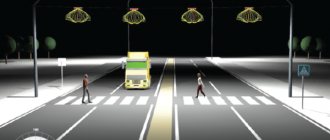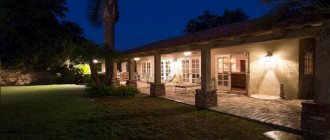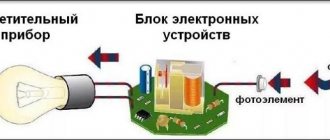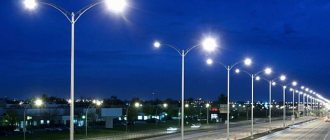Standards for illumination of workplaces and production premises are developed by specialists based on research and approved by metrology authorities. The influence of lighting conditions on human performance, health and productivity is taken into account.
The general rule is that the worse the visual perception of work objects, the higher the average level of illumination required. At the same time, lighting of industrial premises and workplaces is standardized taking into account the nature and accuracy of the labor operations performed and the architectural design of buildings.
In the article we will look at what standardized illumination is, what types of lighting and the most common standards are used in production areas.
Modern trends in office lighting
Maximum natural light
Sunlight is the most favorable factor for office workers. New office centers have large window openings and panoramic façade glazing. To improve natural light, translucent roofs and ceilings, special light wells and lanterns are used. Open space type premises provide better access to sunlight to all work areas.
Optimal luminous flux temperature
Maintaining high staff performance largely depends on the color temperature of lighting. It is recommended to avoid warm and cold shades of white, which have a relaxing or, on the contrary, irritating effect. The optimal choice would be neutral light in the temperature range of 3800-4500 Kelvin.
Lighting control
Adjusting the brightness, color temperature and direction of the light flux allows you to customize the lighting to the individual wishes of your employees. The control functionality is implemented only in LED lamps equipped with specialized power supplies and controllers. Even more opportunities are provided by the installation of intelligent lighting systems in class A office buildings.
Types of office lighting
General
Creates uniform illumination of the entire room without pronounced minimums and maximums. The lamps are installed on the ceiling and produce light cones with a dispersion angle of 200-360°, which partially overlap each other. Lighting devices are equipped with light-diffusing screens that ensure optimal distribution of light in space and on surfaces.
Zonal
Designed to highlight certain areas of the office space, for example, a meeting area, a technical/laboratory area, a coffee corner. The type and parameters of lighting devices are selected individually in order to create the most comfortable conditions for work and rest. It is important that the lighting is diffused and unsharp, without a blinding effect harmful to vision.
Local
Complements the main lighting in the workplace, allowing each employee to independently adjust the level of illumination. LED directional lamps are optimally suited: spots, track systems, pendant and tabletop models. The presence of a dimming function makes it possible to change the intensity of the light flux.
General recommendations
There are several basic lighting requirements:
- Uniformity - the main lamps on the ceiling should be located at the same distance from each other;
- Lamps should have frosted glass - this makes the light less dazzling;
- Maximum reduction of pulsation - LED lamps are used for this purpose;
- Lamp color rendering - this is done using the color temperature indicator. The lower it is, the closer the color of the lamp is to the natural color of the sun; high temperature means bright blue lamps. The optimal indicator for work is 4000K, for rest – 2000-3000K.
Temperature in the office according to sanitary standards
Local lighting, if the worker needs it, is installed on the side of the workplace, on the left for a right-handed person and on the right for a left-handed person. The table should have a matte surface and absorb light so as not to create glare.
Important! Local light should not sharply contrast with the general light in the room, so as not to cause eye strain.
Poor lighting is hazardous to health
Office lighting tasks and standards
The lighting standard for a workplace in an office is regulated by the provisions of SNiP 23-05-95, SP 52.13330.2016, GOST R 55710-2013. Documents standardize indicators of illumination, color rendering, pulsation, and glare.
| Room type | Light level in the workplace, Lux | Glare limitation (max), UGR | Color rendering (min), Ra |
| Drawing | 750 Lux | 16 UGR | 80 Ra |
| Data Processing Writing Reading | 600 Lux | 19 UGR | 80 Ra |
| Automated workstations Meeting rooms Conference hall | 500 Lux | 19 UGR | 80 Ra |
| Reception Office work Copying work | 300 Lux | 22 UGR | 80 Ra |
| Archives | 200 Lux | 25 UGR | 80 Ra |
If the recommended standards are observed, the best comfort in performing any type of work is achieved. High-quality lighting in the office promotes good health, stimulates a positive attitude, and eliminates visual fatigue.
Sanitary and hygienic standards for natural and artificial office lighting are determined by clauses of SaNPiN 2.21/2.1.1.1278-03.
Here are some examples:
- the value of the natural illumination coefficient is 3 in the case of using overhead or combined light, 1 when using side lighting;
- the amount of artificial illumination is 400 lux with combined lighting, 300 lux with general lighting;
- discomfort indicator – no more than 40 units;
- pulsation coefficient – up to 15%.
Basic lighting requirements
When organizing lighting for industrial premises, the following requirements must be taken into account:
- uniform distribution of light sources;
- compliance with specific types of work;
- stable functioning of the system;
- excess of the intensity of general light over local;
- absence of sharp shadows;
- exclusion of bright light sources from the field of view;
- use of opaque reflectors;
- absence of incandescent lamps with power over 100W;
- the color temperature of lighting devices ranges from 2400K to 6800K;
- Do not use ultraviolet lamps with a wavelength less than 320 nm.
Subject to these rules, optimal working conditions for employees are created. The risk of injury and vision impairment is reduced. Labor productivity increases and scrap production decreases. A favorable psychological climate is being established in the team. The work is carried out quickly, efficiently, safely and effectively.
Features of placement of office lamps
The location of the lighting fixtures determines how well each workplace will be illuminated. The most optimal calculation of office lighting can be obtained using the Dialux program, which creates a three-dimensional picture of the room displaying light levels at each point. Calculations of the number, characteristics and placement of lamps are given in the lighting project, along with their installation diagram.
Main nuances:
- location options;
- the presence of a high ceiling allows you to install fewer light sources with greater brightness and dispersion angle;
- on a low ceiling, lighting equipment should be used that does not create glare from the working surface;
- The optimal distance between lighting fixtures is considered to be its value at which the required uniformity of illumination is ensured. You can calculate the distance using the formula:
L=SxH
- H – lamp suspension height
- S – coefficient determined by the light intensity curve. It depends on the light distribution angle: narrow - approximately 0.8, medium - 1.2, wide - 2.
- It is optimal to place lighting fixtures to the left of office desks or on the left and right sides, for example, above the aisles between rows;
- The influence of direct and reflected glare, as well as the degree of shading of working surfaces, should be taken into account.
Light sources for offices
The most popular ICs in modern offices are LEDs and fluorescent tubes. Over the past 3–5 years, compact fluorescent lamps (CFLs) have been almost completely replaced by LED analogues. The latter not only became cheaper, but also surpassed the “economy” ones in the quality of color rendering. At the same time, their energy efficiency has continuously increased, in contrast to the characteristics of CFLs with threaded bases.
Fluorescent tubes can outlast LED line ICs in some cases. This is due to the cooling features of the devices. Not in every situation there is sufficient heat dissipation from LED systems, so sometimes they fail before the design date.
The feasibility of using metal halide ICs in offices is limited by their energy efficiency and the height of the ceilings in the premises. Lamps of this type demonstrate luminous efficiency at the LED level (up to 150 Lm/W) only in the high power range - 500 W and above. To ensure standardized illumination levels, they must be located at heights of more than 5 - 7 m above the level of the design plane. Such scales of space are not typical for offices, but are sometimes found in the hallways of corporate buildings.
Rice. 2. Light sources common in office lighting systems
Quality office lighting parameters
Light flow
Illumination
Surface reflectance
This is the ratio of the light beam reflected from the surface to the light incident on it.
Brilliance
It causes visual discomfort and blindness from the wrong direction of the source's glow.
Ripple factor
If the norm is exceeded, it causes headaches, depression, and general fatigue.
Illumination Uniformity
This is the ratio of the minimum illumination value to the average or maximum, calculated in a room/zone/plane.
Discomfort index
Evaluates the level of lighting changes in the workplace. Excessive value causes rapid eye fatigue.
Blinding criterion
Depends on the brightness of the light sources and the angle of incidence of the light flux.
How to measure illumination
It is accepted by hygienic standards that in rooms in which a person works (or is simply constantly present), the illumination should be at least two hundred lux. However, the value may fluctuate depending on the type of activity. The more complex the visual perception (working with small details), the higher the indicator should be.
Workplace illumination
Important aspects for optimal office lighting
- The main task of lighting is to provide comfortable working conditions, and not the beauty of the embodiment.
- Competent implementation of not only lighting standards, but also all other technological characteristics.
- The best choice is LED lamps: reduced costs for paying for consumed electricity, better energy efficiency, the ability to adjust the brightness and shade of the glow.
- The multi-layer lighting system is an effective combination of main, local and accent lighting.
- The use of monitors with anti-glare screens.
- Ease of access for replacement and repair of lighting fixtures.
What should office lighting be like?
Modern LED lighting in an office should maintain the right balance of natural and artificial light, especially during the day. You need to understand that even the most high-tech lamps will not replace ordinary sunlight. But a thoughtful choice of lamp parameters allows you to provide comfortable lighting that is safe for human vision.
The strain on the eyes of an office specialist is very high. It is required to work with information on a computer, view and compose paper documents, each time switching your gaze to objects of different illumination. Therefore, additional lighting is important, which minimizes light differences.
Lighting should not be too bright or dim, without flickering, not creating shadow gaps, and correctly conveying the colors of the surrounding interior and objects. As a standard, it is necessary to consider the natural light that floods the office space on a bright, sunny day.
